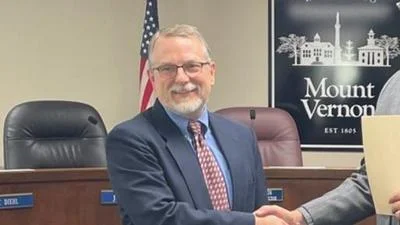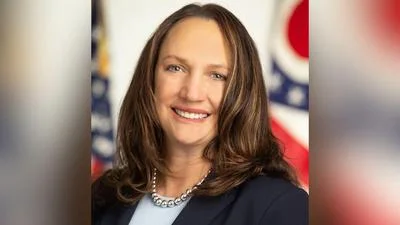State Rep. Beth Lear (R-Galena) was in the audience at the Nov. 30 presentation at Knox Memorial Theater by Knox Smart Development.
During the question and answer session, Lear responded to a concerned citizen's inquiry about the issues faced by counties like Brown County, which prompted a discontinuation of new solar projects.
Lear acknowledged that despite legislative efforts to promote renewables, the likelihood of solar and wind fully replacing lost coal generation capacities was improbable.
“So some people do care,” Lear said in the question and answer portion of the presentation. “And the job of the residents is to make sure that they all care about it. I have concerns. I saw what happened during the budget proceedings.”
Lear highlighted the misconception that all solar projects in Ohio appear to be union-only, while the state lacks sufficient solar or wind capacity to replace lost coal resources.
“One bill that was out there is that the labor that comes in is supposed to be and it's not,” Lear said. “The reason it's not is because unions are allowed to hire labor from outside the state government. But when it comes through a local union shop, it's considered local even if it comes from out of state.”
She urged citizens to voice their concerns with their elected representatives.
“We've talked to PJM, they've tried to convince them,” Lear said of the regional electric supplier PJM Interconnection, which controls the grid and electric market in 13 states and Washington, D.C.
“They're not listening right now. We're not giving up, but being a voice and letting us know, that's something that makes a difference to legislators. So don't be silent. Make sure you're contacting us.”
Lear also asked author and Heritage Foundation fellow Steve Goreham, who gave a lecture on how climate change was being hyped to push for renewables, if he’d come speak at the state house.
“I just wanted to ask you, Mr. Goreham. I get to be Vice Chair of Energy and Natural Resources. If I can convince the committee to have you come in and give a presentation. Would you be willing to come?” Lear asked Goreham.
“Oh, I certainly hope so,” Goreham responded.
Goreham, Executive Director of the Climate Science Coalition of America and Heritage Foundation fellow, had earlier delivered a thought-provoking presentation.
Goreham challenged commonly held assumptions about solar energy and its role in combating climate change.
Ohio, where renewables constitute only 1.7% of energy generation, relies heavily on coal (42.8%), natural gas (37.5%), and nuclear energy (16.6%).
Specifically pointing out solar's outsized land requirement, he raised concerns about the efficiency and practicality of solar energy in terms of land utilization.
Goreham warned against increased investment in intermittent forms of power, citing the lethal Texas blackouts in February 2021 as a consequence of relying on solar and wind energy.
The presentation sparked a broader debate on climate change, renewables and the practicality of proposed solutions.
In a report released earlier this year, PJM Interconnection reported that coal power plant retirements outpace replacements, posing a potential threat to grid reliability.
“The analysis shows that 40 GW of existing generation are at risk of retirement by 2030. This figure is composed of: 6 GW of 2022 deactivations, 6 GW of announced retirements, 25 GW of potential policy-driven retirements and 3 GW of potential economic retirements. Combined, this represents 21% of PJM’s current installed capacity,” PJM reported.
This trend became particularly evident during Winter Storm Elliott in late 2022, which resulted in widespread power outages across PJM's coverage area from Dec. 21-26
At the peak of the storm, approximately 47,000 megawatts were unexpectedly offline. A single megawatt is enough to power between 400 and 900 homes for an entire year.
PJM reported power plants were having a hard time meeting needs during the storm with a preliminary review attributing the outages to power plant equipment failures, start-up issues, units tripping offline and temperature-related failures.






